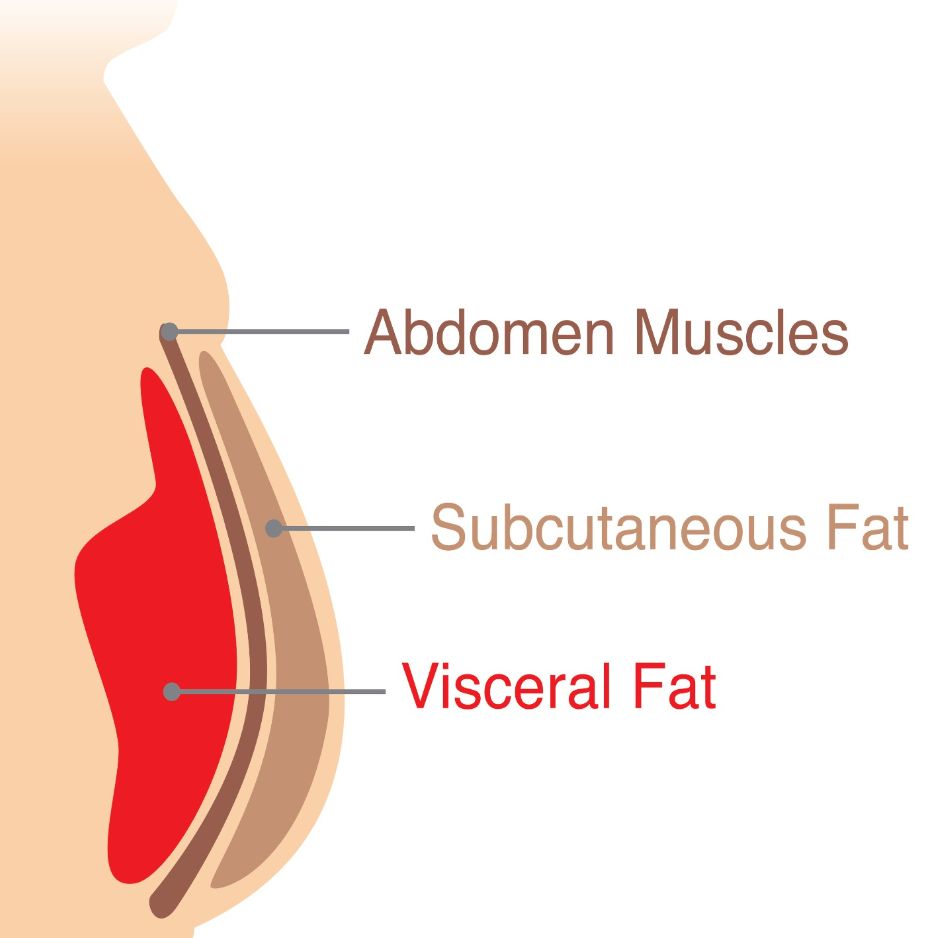How to Improve Heart Rate Variability: Tips and Strategies

How to Improve Heart Rate Variability: Tips and Strategies
Heart rate variability (HRV) refers to the variation in the time interval between heartbeats. It is a measure of the autonomic nervous system's ability to adapt to different physiological and psychological stressors. Higher HRV is generally considered an indicator of good health and fitness, as it reflects the body's ability to efficiently respond to changes in the environment. In this article, we will explore the importance of HRV, factors affecting it, tips to improve it, exercises that can boost it, and how to monitor it effectively.
Get weekly updates.
Understanding Heart Rate Variability
Heart rate variability is a complex physiological phenomenon influenced by various factors. It is regulated by the autonomic nervous system, which consists of the sympathetic and parasympathetic branches. The sympathetic branch prepares the body for action and is responsible for the fight-or-flight response, while the parasympathetic branch promotes rest and relaxation. HRV measures the balance between these two branches of the autonomic nervous system.
When we talk about heart rate variability, it's important to understand that it is not just a simple measurement of the heart rate. It is a reflection of the body's ability to adapt and respond to different situations. The heart rate is not constant but rather fluctuates in response to various internal and external factors.
One fascinating aspect of heart rate variability is its connection to the body's stress response. When we encounter a stressful situation, our sympathetic nervous system kicks into gear, preparing us for fight or flight. This leads to an increase in heart rate and a decrease in heart rate variability. On the other hand, when we are in a relaxed state, the parasympathetic branch takes over, leading to a decrease in heart rate and an increase in heart rate variability.
The Importance of Heart Rate Variability
Heart rate variability does more than just indicate the body's response to stress. It is considered a key indicator of overall cardiovascular health. Studies have shown that individuals with higher HRV are at a lower risk of developing cardiovascular diseases such as heart attacks and strokes. This is because a higher HRV indicates a better ability of the autonomic nervous system to adapt to different situations and maintain a healthy balance between the sympathetic and parasympathetic branches.
Furthermore, heart rate variability has been linked to mental health. Research suggests that lower HRV is associated with conditions like depression and anxiety. This connection between mental health and HRV highlights the intricate relationship between our physical and emotional well-being.
Factors Affecting Heart Rate Variability
Several factors can affect heart rate variability. Age, gender, and genetics play a role in determining an individual's HRV baseline, with HRV generally declining with age. As we grow older, our autonomic nervous system may become less flexible, leading to a decrease in HRV.
Lifestyle factors also have a significant impact on heart rate variability. Chronic stress, for example, can have a detrimental effect on HRV. When we are constantly exposed to stressors, our sympathetic nervous system remains active for extended periods, leading to a decrease in HRV. On the other hand, engaging in stress management techniques such as meditation, deep breathing exercises, and mindfulness can help improve HRV by activating the parasympathetic branch and promoting relaxation.
Sleep quality is another crucial factor affecting HRV. Poor sleep can disrupt the body's natural rhythms and affect the balance between the sympathetic and parasympathetic branches. Studies have shown that individuals who experience sleep disturbances often have lower HRV, indicating a less adaptive autonomic nervous system.
Physical activity and exercise also play a role in heart rate variability. Regular exercise has been shown to improve HRV by enhancing the body's ability to adapt to different stressors. Engaging in aerobic exercises like running, swimming, or cycling can strengthen the cardiovascular system and promote a healthier autonomic nervous system.
In conclusion, heart rate variability is a fascinating phenomenon that goes beyond a simple measurement of heart rate. It reflects the body's ability to adapt to different situations and maintain a healthy balance between the sympathetic and parasympathetic branches of the autonomic nervous system. Understanding the importance of HRV in cardiovascular and mental health can motivate us to prioritize lifestyle factors that promote a higher HRV, such as stress management, quality sleep, and regular exercise.
The Connection Between Heart Rate Variability and Health
Heart rate variability is not just an indicator of cardiovascular health. Research has shown that HRV is associated with various aspects of health, including mental well-being and disease risk.
Heart Rate Variability and Cardiovascular Health
High HRV is associated with a lower risk of cardiovascular diseases such as heart disease, high blood pressure, and diabetes. A study published in the American Journal of Cardiology found that individuals with higher HRV had a reduced risk of developing coronary artery disease. Regular physical activity, stress reduction techniques, and a healthy diet can help maintain optimal HRV and promote cardiovascular health.
Heart Rate Variability and Mental Health
Research has also linked HRV to mental health. Low HRV is associated with conditions such as depression, anxiety, and post-traumatic stress disorder. On the other hand, higher HRV is associated with better emotional regulation and increased resilience to stress. Mindfulness practices, meditation, and deep breathing exercises can enhance HRV and contribute to better mental well-being.
Practical Tips to Improve Heart Rate Variability
If you want to optimize your heart rate variability, here are some practical tips to consider:
Lifestyle Changes for Better Heart Rate Variability
Reducing stress is crucial for improving HRV. Incorporate stress management techniques into your daily routine, such as deep breathing exercises, yoga, or mindfulness meditation. Prioritize quality sleep and establish a relaxing bedtime routine. Engage in activities that bring you joy and promote relaxation, such as spending time in nature, listening to calming music, or practicing hobbies.
Dietary Adjustments to Enhance Heart Rate Variability
Your diet can also impact heart rate variability. Focus on consuming a balanced diet rich in whole foods, including fruits, vegetables, lean proteins, and healthy fats. Limit your intake of processed foods, sugary beverages, and foods high in saturated and trans fats. Stay adequately hydrated throughout the day. Consider incorporating omega-3 fatty acids, found in fatty fish, into your diet, as they have been associated with improved HRV.
Exercises to Boost Heart Rate Variability
Regular exercise can have a significant impact on heart rate variability.
Cardiovascular Workouts for Heart Rate Variability
Aerobic exercises such as running, cycling, swimming, and brisk walking can improve HRV. Aim for at least 150 minutes of moderate-intensity aerobic exercise or 75 minutes of vigorous-intensity aerobic exercise per week. Start with a duration and intensity that is appropriate for your fitness level and gradually increase over time. Remember to warm up and cool down properly to prevent injuries.
Breathing Techniques to Improve Heart Rate Variability
Practicing deep breathing exercises can help stimulate the parasympathetic nervous system and improve HRV. One effective technique is called paced breathing, where you inhale deeply for a count of four, hold your breath for a count of four, and exhale for a count of four. Repeat this pattern for several minutes, focusing on slow and controlled breaths. Incorporate these breathing exercises into your daily routine for maximum benefits.
Monitoring Your Heart Rate Variability
Monitoring your heart rate variability can provide valuable insights into your overall well-being and help track the effectiveness of your interventions.
Tools and Devices for Tracking Heart Rate Variability
There are various tools and devices available that can help you track your HRV. Wearable devices such as smartwatches and fitness trackers often include HRV monitoring features. These devices use sensors to measure your heart rate and interval between beats, giving you real-time data on your HRV. Additionally, there are smartphone apps specifically designed for HRV monitoring, which allow you to track your progress over time.
Interpreting Your Heart Rate Variability Data
Interpreting HRV data can be complex, as it involves analyzing patterns, trends, and factors that influence your variability. It is recommended to consult with a healthcare professional or specialist who can help you understand your HRV data and provide personalized recommendations based on your unique circumstances.
In conclusion, heart rate variability is an important indicator of overall health and well-being. By understanding the factors that affect HRV and implementing practical strategies to improve it, you can enhance your cardiovascular health, promote mental well-being, and optimize your overall physiological response to stress. Monitoring your HRV using available tools and devices allows you to track your progress and make informed decisions about your health and lifestyle.
Remember, if you are looking to track not just your heart rate variability but also your body composition and bone health, consider BodySpec's affordable DEXA scans. With their advanced scanning technology, you can accurately assess your body fat, muscle mass, and bone density. By tracking these markers over time, you can make informed decisions to improve your overall health and fitness journey.


